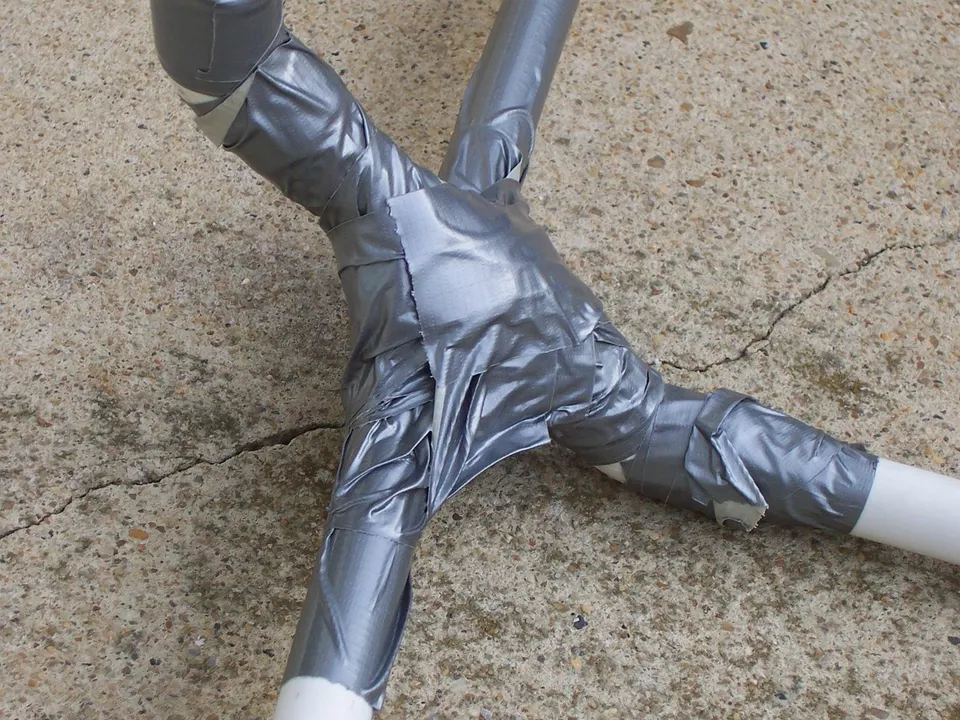Introduction: The Duct Tape Debate
As a soccer player and blogger, I have come across many ways to fix and maintain my soccer cleats. One popular method that has always generated curiosity and debate is using duct tape. In this article, we will explore whether duct tape can damage soccer cleats and if it's a viable option for repair and maintenance. We will go through various sections, discussing the pros and cons, alternatives, and tips on using duct tape on soccer cleats.
Why Soccer Players Use Duct Tape on Their Cleats
Before diving into the potential damage that duct tape can cause, let's first understand why soccer players feel the need to use duct tape on their cleats. Soccer cleats can be quite pricey, especially the high-quality ones, so when they start to wear out or get damaged, players look for a quick and affordable fix. Duct tape is easily accessible, inexpensive, and known for its strong adhesive properties, making it an appealing option for players who want to extend the life of their cleats.
Pros of Using Duct Tape on Soccer Cleats
There are some advantages to using duct tape on soccer cleats that cannot be ignored. Firstly, duct tape can provide a temporary solution for minor damage, such as small tears or holes in the upper part of the cleat. This can save the player from having to buy new cleats immediately. Secondly, duct tape can offer additional support to the cleat, particularly in the area around the ankle or heel where it tends to wear out the fastest. This can help players feel more secure and comfortable on the field.
Cons of Using Duct Tape on Soccer Cleats
While duct tape can offer some benefits, there are also potential drawbacks to using it on soccer cleats. One of the main concerns is that the adhesive properties of duct tape can damage the material of the cleats, particularly if it is left on for an extended period of time. This can lead to further deterioration and eventually require a more costly repair or replacement. Additionally, using duct tape on cleats can also affect their performance on the field, as it may alter their fit and feel, potentially causing discomfort or hindering a player's ability to perform at their best.
Alternatives to Duct Tape for Cleat Repair
Given the potential downsides of using duct tape, it's worth exploring some alternative methods for repairing soccer cleats. One option is to use a specialized shoe glue or adhesive, which is designed specifically for repairing footwear and is less likely to cause damage. Another option is to visit a professional shoe repair shop, where experts can assess the damage and provide a more permanent solution. While these alternatives may be more expensive than duct tape, they can help ensure the longevity of your cleats and maintain their performance.
How to Properly Apply Duct Tape to Soccer Cleats
If you still decide to use duct tape on your soccer cleats, it's important to apply it properly to minimize potential damage. Start by cleaning the surface of the cleat to ensure the tape adheres well. Cut a piece of duct tape that is just slightly larger than the area you are trying to repair. Press the tape firmly onto the cleat, ensuring there are no wrinkles or air bubbles. Remember that duct tape should only be used as a temporary solution and should be removed and replaced as needed.
Preventing Soccer Cleat Damage in the First Place
Prevention is always better than cure, so it's best to try and prevent damage to your soccer cleats in the first place. Proper care and maintenance can help extend the life of your cleats and reduce the need for repairs. Always clean your cleats after use, removing dirt and debris, and allowing them to air dry. Avoid exposing them to extreme temperatures, as this can weaken the materials. Additionally, rotating between multiple pairs of cleats can help reduce wear and tear on a single pair.
When to Replace Your Soccer Cleats
While it's tempting to try and prolong the life of your soccer cleats as much as possible, it's important to recognize when it's time to replace them. Cleats that are damaged beyond repair or no longer provide the necessary support and performance on the field should be replaced. Wearing worn-out cleats can increase the risk of injury and hinder your ability to play at your best. Investing in a new pair of soccer cleats is a wise choice for the safety and success of your soccer career.
Conclusion: Is Duct Tape a Good Solution for Soccer Cleats?
In conclusion, the use of duct tape on soccer cleats is a controversial topic. While it can provide a quick and affordable temporary fix, there are potential downsides and alternatives to consider. Ultimately, it's up to each individual player to weigh the pros and cons and decide if using duct tape is the best solution for their specific situation. As a soccer blogger and player, I believe that proper care and maintenance, along with investing in quality cleats, is the best approach to ensuring the longevity and performance of your soccer footwear.




